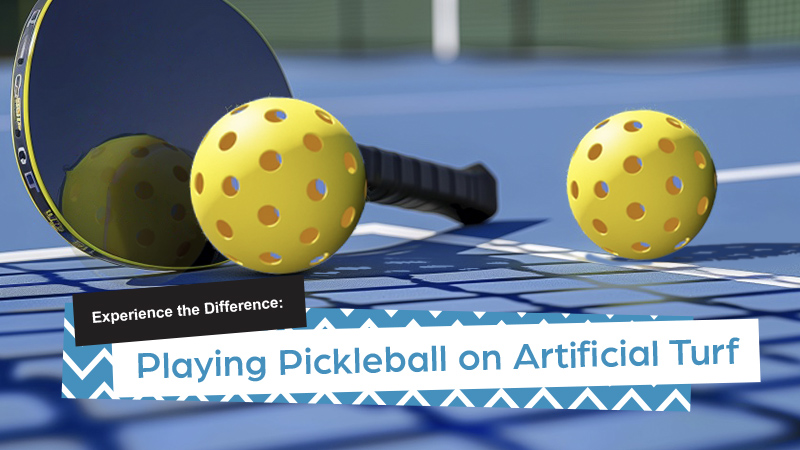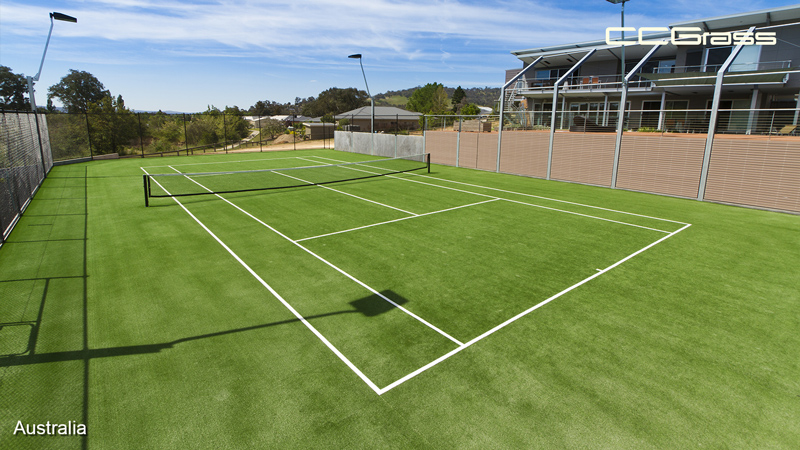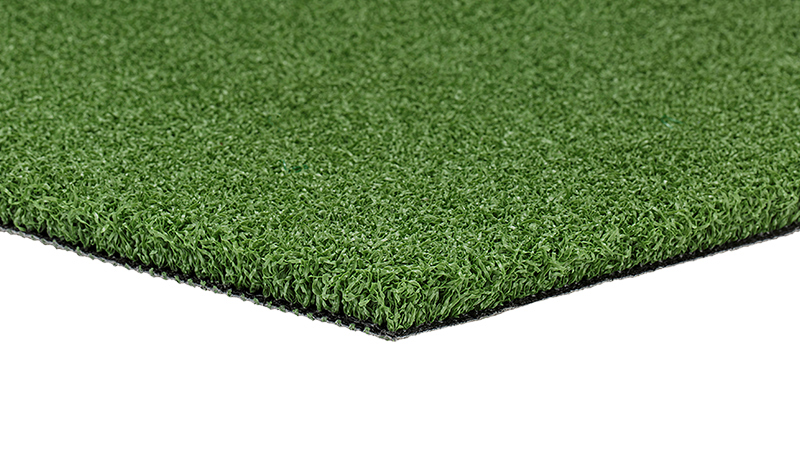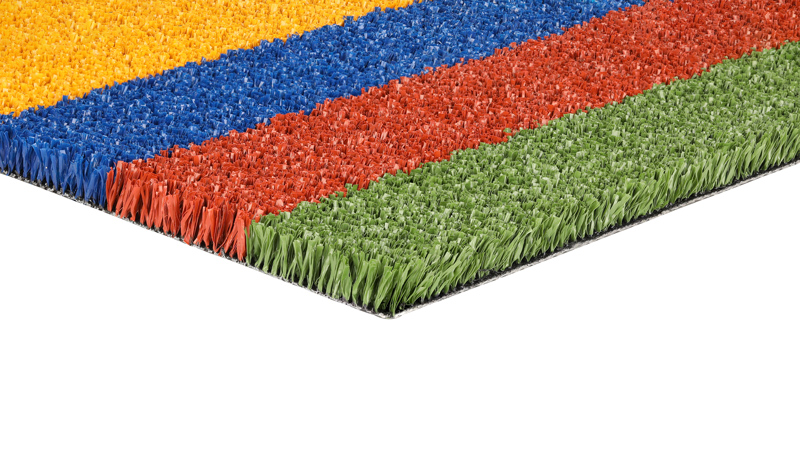Experience the Difference: Playing Pickleball on Artificial Turf
- 08/01/2024
Pickleball, a dynamic and rapidly growing sport, blends elements from tennis, badminton, and ping-pong. Why is pickleball so popular suddenly? Compared to other sports, pickleball has a lower chance of injury, a lower cost to entry, and it is not too physically strenuous.
Its appeal spans all ages and skill levels, making it a favorite for recreational play worldwide. As the sport gains traction, players and facility managers are seeking the best surfaces to enhance their playing experience.
Artificial turf, traditionally used for sports like football and hockey, is increasingly being adapted for pickleball. Unlike hard courts, pickleball on artificial turf offers a softer, more forgiving surface that can reduce joint stress.
This post will explore the benefits of different surfaces for pickleball, compare them, and highlight why pickleball turf might be the ideal choice for your next court upgrade.

In this article:
What is pickleball?
Pickleball is played on a court about a third the size of a tennis court, with a solid paddle and a lightweight perforated plastic ball.
The basic objectives of pickleball include:
- Keeping the ball within the court boundaries
- Serving the ball correctly to the opponent
- Following the “two-bounce rule,” which requires the ball to bounce at least once on each side before volleys are allowed
- Avoiding the “No Volley-Zone,” a seven-foot area on both sides of the net wherevolleys are not permitted
- Playing to a predetermined score, typically 11, 15, or 21 points
Pickleball’s versatility allows it to be played on various surfaces, both indoors and outdoors. Tennis courts, basketball courts, and indoor gym spaces can all be converted into pickleball courts.
However, the surface type affects the game’s pace, ball bounce, and traction. Understanding these factors helps players choose the best surface for their preferences and playing style.
Playing pickleball on different surfaces
Common playing surfaces (concrete, asphalt, indoor gym flooring)
- Concrete: Commonly used for outdoor pickleball courts, concrete provides a hard, flat surface that ensures consistent ball bounce. However, it can be tough on players’ joints due to its hardness.
- Asphalt: Another popular choice for outdoor courts, asphalt is slightly softer than concrete, offering a bit more cushioning for players. It is durable and weather-resistant but may crack over time with heavy use and weather changes.
- Indoor gym flooring (wood or rubber): Typically used for indoor courts, gym flooring offers excellent shock absorption, reducing the impact on joints. Wood floors provide a natural feel and good traction, while rubber flooring enhances comfort and reduces the risk of injury.
Due to their durability and low maintenance, these common surfaces are popular choices for pickleball courts. They offer an excellent bounce and are well-suited for competitive play.
Can you play pickleball on the grass?
Yes, you can play pickleball on grass, but it comes with its own set of challenges. Natural grass courts can be uneven, which affects the bounce of the ball. Additionally, grass can become slippery when wet, posing a risk for injuries. However, playing on grass provides a soft surface that can be more forgiving on the joints, making it an appealing option for casual games in backyards or parks.
Can pickleball be played on artificial turf?
Absolutely, artificial turf is a reliable surface for pickleball. It provides a consistent and even playing surface, which ensures predictable ball bounce and enhances gameplay. Available in various colors, it can also add a stylish touch to your pickleball court.
Plus, it helps reduce glare from the sun, improving visibility and making it easier to see the ball. Durable and low-maintenance, synthetic turf handles heavy use and varying weather conditions well, and its versatility renders it suitable for multiple sports.
Comparison of pickleball surfaces: Common Surfaces, grass, and artificial turf
| Surface | Pros | Cons |
| Common surfaces (concrete, asphalt, indoor gym flooring) |
• Durable and low maintenance • Consistent and even playing surface • Indoor gym flooring offers good shock absorption |
• Generally hard on joints • Can become slippery when wet • Concrete and asphalt may crack over time |
| Grass | • Soft on joints • Natural look and feel |
• Uneven surface • Limited usage, affected by weather • High maintenance |
| Artificial turf | • Consistent playing surface • Durable and weather-resistant • Comfort and aesthetics |
• Higher initial cost • Potential for infill displacement over time |
Can you play pickleball on a tennis court?
Yes, tennis courts can be adapted for pickleball with ease. Many facilities simply add pickleball lines to the existing tennis court surface and use portable nets for temporary setup.
Artificial grass tennis courts, in particular, are ideal for this conversion. The consistent and cushioned nature of artificial turf enhances playability and reduces the risk of injury, making the courts suitable for both tennis and pickleball enthusiasts. This multifunctional use maximizes the utility of the court and provides a great playing experience for both sports.

Upgrade your pickleball court with CCGrass artificial turf
When selecting turf for pickleball courts, durability is essential to ensure the surface withstands continuous heavy foot traffic without tearing or wearing down. UV-resistant materials play a key role in maintaining longevity, preventing fading and degradation from prolonged sun exposure.
Additionally, for an enjoyable and competitive pickleball experience, having a consistent and optimal ball bounce is crucial. Here are some best pickleball turf options that meet these high standards:
FastPro: Premier pickleball turf for performance
FastPro is a heavyweight turf made of strong texturised monofilament yarns with a compact appearance and excellent resilience. Available in vibrant colors such as green, blue, and red, it offers an attractive aesthetic for pickleball enthusiasts.
FastPro delivers top-notch sports performance with consistent and optimal ball bounce, ensuring predictable ball behavior. It also meets the needs of multiple sports, including tennis (ITF Category 4 – Medium-fast) and padel.
YEII: Budget-friendly pickleball turf with comfort
YEII features a unique fibrillated structure that offers high wear resistance. It is an economical option for pickleball courts, providing a soft and comfortable playing surface ideal for those who prefer a gentler, more realistic feel.
With various color options, YEII allows you to create vibrant and visually appealing pickleball courts. YEII’s versatility extends to sports such as tennis (ITF Category 5 – Fast), padel, and recreational football.
Conclusion
Choosing the right surface for your pickleball court can transform your playing experience. While traditional surfaces each have their advantages, pickleball on artificial turf offers exceptional benefits, including superior durability, minimal maintenance, and consistent performance.
Ready to elevate your game? Get free pickleball turf samples and expert advice on installation and maintenance by contacting us today. Call 86 25 6981 1666 or email [email protected] to start creating your perfect court.





